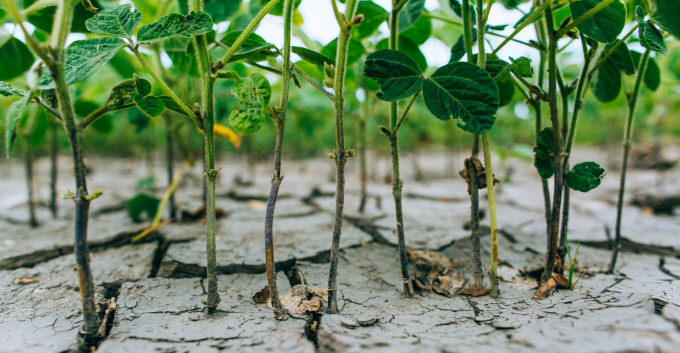November 27, 2025 | 23:53 GMT +7
November 27, 2025 | 23:53 GMT +7
Hotline: 0913.378.918
November 27, 2025 | 23:53 GMT +7
Hotline: 0913.378.918

Corn quality holds steady for week ending July 4
Was this week’s report worth the extra wait? Arguably not – there weren’t many significant surprises that will move the needle on grain prices very much in either direction. Corn quality held steady, with soybean quality facing a one-point dip. The biggest shocker was spring wheat conditions, which suffered another four-point drop from a week ago.
Corn quality remained largely steady, with 64% rated in good-to-excellent condition through Sunday, mirroring analyst expectations. However, 27% of the crop is rated fair (down a point from last week), with the remaining 9% rated poor or very poor (up a point from last week). State-by-state variability is still considerable, ranging from Ohio (85% rated G/E) down to South Dakota (24% rated G/E).
Physiologically, 10% of the crop has reached the silking stage, up from 4% a week ago and slightly ahead of 2020’s pace of 9% but down from the prior five-year average of 14%.
Soybean quality dropped a point, with 59% of the crop now rated in good-to-excellent condition. Analysts were expecting USDA to leave ratings unchanged, in contrast. Another 30% of the crop is rated fair (down a point from last week), with the remaining 11% rated poor or very poor (up two points from last week).
Physiologically, 29% of the crop is blooming, up from the prior weeks’ mark of 14% and moving along moderately faster than the prior five-year average of 24%. And 3% is setting pods, which is identical to the prior five-year average.
Winter wheat also dropped a point lower, with 47% rated in good-to-excellent condition. Analysts were expecting USDA to leave quality ratings unchanged. Another 30% is rated fair (down a point from a week ago), with the remaining 23% rated poor or very poor (up two points from last week).
Harvest continues to see some forward momentum, moving from 33% completion a week ago up to 45% through Sunday. That’s a more sluggish pace than 54% in 2020 and the prior five-year average of 53%. Three of the top 18 production states – Michigan, Montana and Washington – haven’t made any measurable harvest progress yet, according to USDA.
Analysts expected to see another one-point drop for spring wheat ratings, but USDA trimmed ratings four points lower, with just 16% of the crop now rated in good-to-excellent condition. Another 34% is rated fair (down seven points from last week), with the remaining 40% rated poor or very poor (up 11 points from last week).
Physiologically, 69% of the crop is headed, up from 48% a week ago and faster than both 2020’s pace of 59% and the prior five-year average of 62%.
(USDA)

(VAN) A new study reveals how the simultaneous effects of ocean acidification, salinity and loss of oxygen are making the world more fragile.

(VAN) Hopes are growing that the creation of the first 3D turkey gut model could be a turning point in the battle against the virulent blackhead disease.

(VAN) Tyson, America’s biggest meat supplier, plans to shutter one of its largest beef processing plants as the industry continues to struggle with low cattle supplies and political pressure from Washington.

(VAN) New FAO study shows how digital solutions are empowering farmers and fishers to prevent losses and build resilient agrifood systems.

(VAN) Brazil's COP30 presidency pushed through a compromise climate deal on Saturday that would boost finance for poor nations coping with global warming but that omitted any mention of the fossil fuels driving it.

(VAN) Poultry farmers in the UK have been warned that they could face one of the worst winters yet for bird flu.

(VAN) Prices of main-crop paddy have risen sharply, with jasmine rice hitting 16,100 baht per tonne — the highest level in years.